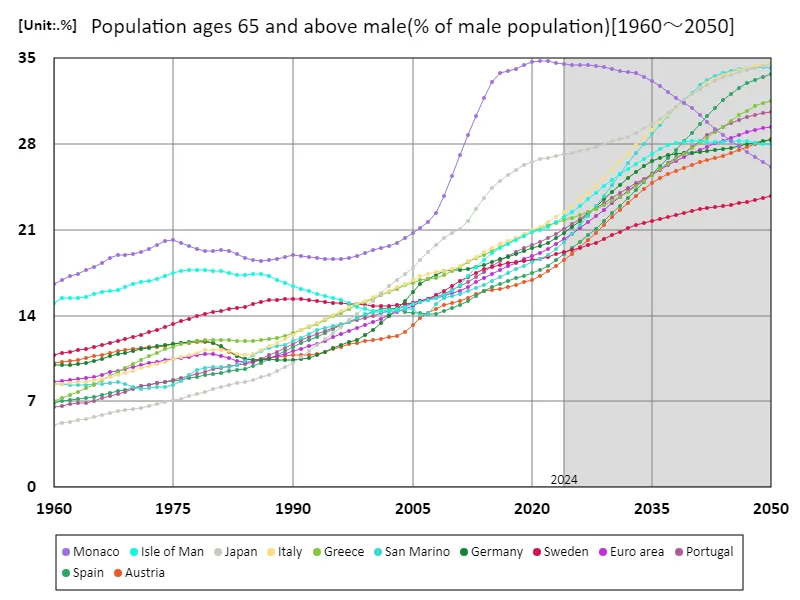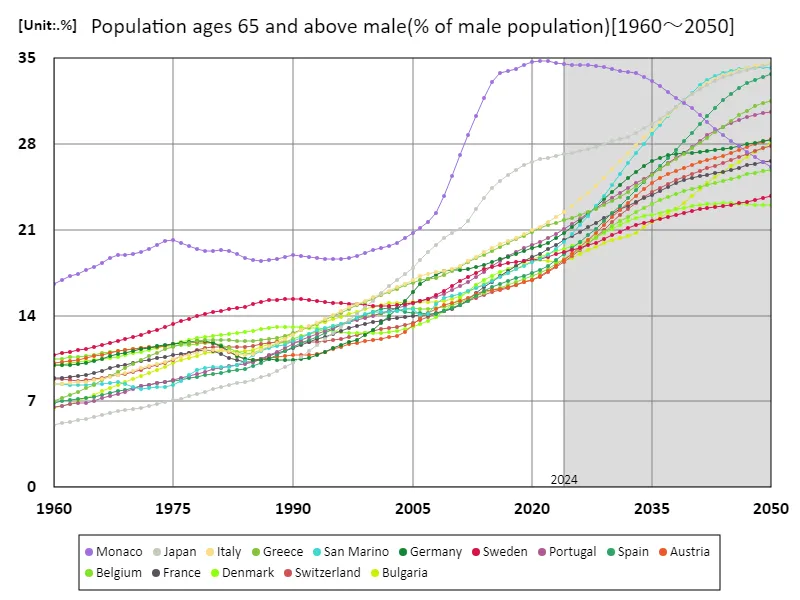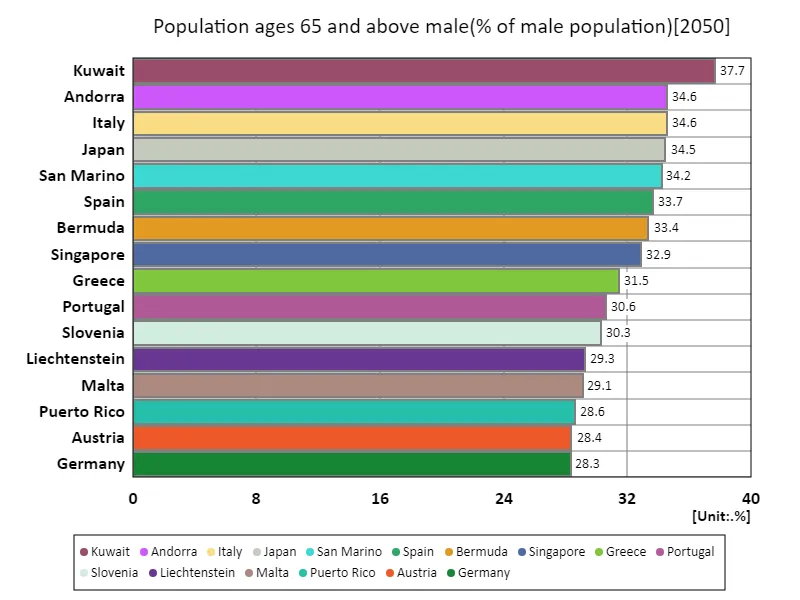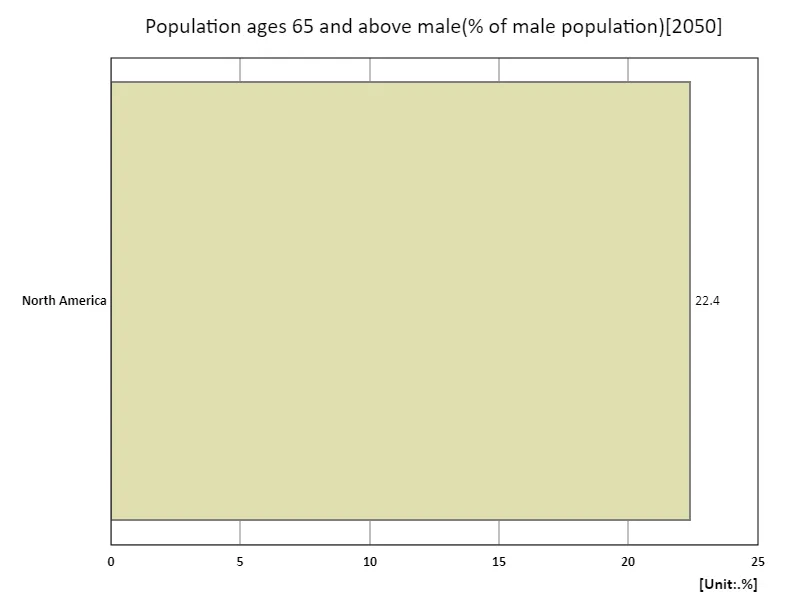Abstract
Italy’s projected male population ratio of 34.6% for men aged 65 and over in 2050 reflects a broader trend of aging populations in developed economies. Over recent decades, countries like Italy have seen increased life expectancy and declining birth rates, contributing to an older demographic. This shift challenges labor markets, healthcare systems, and pension structures, requiring adaptation to a shrinking working-age population. Italy’s trend mirrors those of other European nations, with a growing emphasis on addressing the economic and social implications of aging societies.
Men aged 65 and over (percentage of male population)
Monaco’s male population ratio of 34.8% for men aged 65 and over, recorded in 2021, highlights a significant aging trend in developed economies. Since 1960, increasing life expectancy and lower birth rates have driven the rise in older populations. Monaco’s rate, now at 75.1% of its peak, reflects a plateauing trend due to fewer births and greater longevity. This aging demographic presents challenges for economic productivity, healthcare, and pension systems, pushing countries to find sustainable solutions for a shrinking workforce and rising elderly care needs.


The maximum is 34.8%[2021] of Monaco, and the current value is about 75.1%
Men aged 65 and over (percentage of male population) (Worldwide)
Monaco’s male population ratio of 34.8% for men aged 65 and over, recorded in 2021, marks the highest rate globally. This reflects broader demographic shifts seen since 1960, with increased life expectancy and declining birth rates. Monaco’s current ratio, at 75.1% of its peak, suggests a stabilization after rapid aging. As older populations grow, challenges such as workforce shortages, healthcare demands, and pension sustainability intensify. These trends are mirrored across many developed nations, signaling the need for policies that address the economic and social impacts of an aging society.


The maximum is 34.8%[2021] of Monaco, and the current value is about 75.1%
Men aged 65 years and older (male population ratio) (Worldwide, latest year)
By 2050, Kuwait is projected to have the highest male population ratio of 65+ year-olds at 37.7%, highlighting significant demographic shifts. This reflects the global trend of aging populations due to increased life expectancy and lower birth rates. While Kuwait’s ratio is notably high, the global average of 15.7% illustrates the growing prevalence of elderly populations worldwide. These shifts signal challenges for economies, including labor force declines, higher healthcare costs, and pension system strains, requiring adaptive policies for aging societies across the globe.


The maximum is 37.7% of Kuwait, the average is 15.6%, and the total is 3.05k%
Men aged 65 years and older (male population ratio) (region, latest year)
By 2050, the euro area is projected to have a male population ratio of 65+ year-olds at 29.4%, significantly higher than the global average of 15.1%. This reflects ongoing demographic trends in Europe, where low birth rates and increased life expectancy are leading to a growing elderly population. The euro area’s figure, representing 227% of the global average, highlights the aging challenges faced by many European nations. These trends demand urgent attention to workforce sustainability, healthcare, and pension systems to adapt to the shifting demographic landscape.


The maximum is 22.4% of North America, the average is 22.4%, and the total is 22.4%



Comments